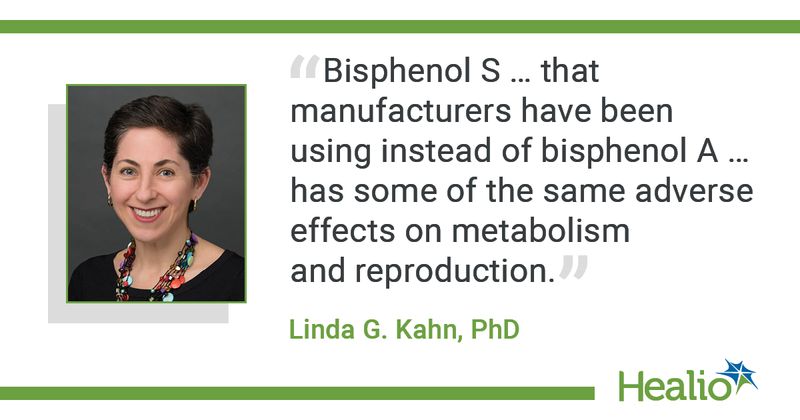Growing evidence shows endocrine-disrupting chemicals drive obesity, infertility, diabetes
Endocrine-disrupting chemicals negatively affect a wide range of systems throughout the human body and have consequences at every life stage, and clinicians should counsel patients to try to reduce their exposure, according to researchers.
In a series paper published in The Lancet Diabetes & Endocrinology, Linda G. Kahn, PhD, a postdoctoral fellow in the department of pediatrics at NYU Grossman School of Medicine, and colleagues reviewed additions to the literature since the Endocrine Society published a 2015 review detailing associations between endocrine-disrupting chemicals, or EDCs, and adverse endocrine-related outcomes. New evidence suggests associations between exposure to perfluoroalkyl substances, or PFAS, and child and adult obesity, impaired glucose tolerance, gestational diabetes, reduced birth weight, reduced semen quality, polycystic ovarian syndrome, endometriosis and breast cancer. PFAS are a large and expanding group of manmade compounds widely used to make everyday products more resistant to stains, grease and water, according to the NIH.

“In the past 5 years, numerous additional studies have been published, so we decided it was time to update the Endocrine Society findings and to expand them to include chemicals and health outcomes that they did not cover in their paper,” Kahn told Healio.
Growing evidence
In the article, Kahn and colleagues wrote that there is growing evidence to suggest new adverse health effects of frequently used EDCs with a probability of causation, as well as stronger evidence of harm for many other EDCs previously identified by an expert panel commissioned by WHO and the United Nations Environment Programme.
The researchers identified PFAS in particular, which can be found in items such as nonstick cookware and waterproof clothing, as “chemicals of concern,” noting possible associations with obesity, endometriosis and PCOS, among other outcomes.
New findings suggest that PFAS, bisphenols and certain pesticides may damage semen, Kahn and colleagues wrote. In addition, the review identifies numerous new studies that link brain-related health concerns, such as IQ loss and attention deficit hyperactivity disorder, to flame retardants and chemicals found in certain pesticides.
“The expanding evidence for these environmental contributors to non-communicable diseases suggests that synthetic chemicals are ignored or at least underappreciated as a focus of the 2030 Sustainable Development Goals,” the researchers wrote. “Decreasing exposure to synthetic chemicals with endocrine-disrupting or other adverse properties is not identified as one of the Sustainable Development Goals, although the [goals] rightly emphasize air pollution and climate change as global priorities.”
The researchers noted that the new exposure-outcome pairings proposed in the paper have not been subject to systematic review methods and other methods to evaluate the strength of evidence and probability of causation, and that more research is needed.
‘Replacement chemicals’ questioned
Kahn said longitudinal studies that collect biosamples in which chemicals can be measured from conception or preconception through adulthood are necessary to understand the interaction between dose and timing on developmental and disease outcomes.
“Also, more studies need to be done on the newer replacement chemicals that are being substituted for chemicals that have been restricted,” Kahn said. “For example, evidence is accumulating that bisphenol S, a regrettable substitute that manufacturers have been using instead of bisphenol A in ‘BPA-free’ products, has some of the same adverse effects on metabolism and reproduction, including increased risk for diabetes and poor semen quality.”
As Healio previously reported, the NIH’s National Institute of Environmental Health Sciences and the Endocrine Society held a congressional briefing in November to highlight how PFAS may be associated with a range of adverse outcomes, including obesity, thyroid dysfunction and low bone mineral density. The two groups called on Congress to support efforts for increased research and collaboration between agencies.
For more information:
Linda G. Kahn, PhD, can be reached at the Department of Pediatrics, New York University Grossman School of Medicine, New York University, 403 E. 34th St., New York, NY 10016; email: linda.kahn@nyulangone.org.
